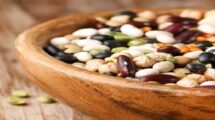As the new moong dal (green gramme) crop has begun to hit the markets in Karnataka, prices of the pulse seed are trending lower than the Minimum Support Price (MSP) levels, causing growers to demand that the government begin procurement of the crop as soon as possible.
Prices are being influenced by a combination of low demand and imports. Despite a marginal decline in Kharif acreage, primarily in parts of Maharashtra and Gujrat, and delayed sowing in Rajasthan, the major producer, due to erratic rains, this is the case. According to trade sources, moong arrivals have begun in markets such as Gadag and Bagalkot over the last two weeks. Modal prices (the rate at which most trades were conducted) are hovering well below the minimum support price level of ₹7,275 per quintal.
Also Read:Altered pulse import policy leaves 15,000 tn of pigeon pea imports stuck
‘Arrivals have yet to pick up, but prices for good quality moong dal are ₹6,000-₹6,300 per quintal, and premium quality is between ₹6,400 and ₹6,700.’ A quintal of average quality costs ₹5,600-5,800, according to a trader in Gadag, North Karnataka.
Demand is low
Moong dal, a 60-days crop, is the first of the Kharif crops to be harvested and is widely grown in parts of North Karnataka, Rajasthan, Maharashtra, and is the largest producer, with a normal area of over 19 lakh hectares (lh). However, sowing was delayed in Rajasthan this year season due to the late poring of the monsoon, but according to the most recent estimates, the moong dal area has caught up and is marginally lower than last year’s level of 19.68 lh.
According to trade sources in Karnataka, the overall demand for moong dal is sluggish. ‘We are entering the festival season, and consumption is likely to increase in the coming months, which may keep prices stable. Farmers may be reluctant to sell if prices fall further,’ a trader said.
Moong harvest is closely followed by the urad dal harvest, which takes 85-90 days to mature. The modal price in Gadag, a major producing region, is around ₹5,532 per quintal, while it is around ₹5,000 in Kalaburgi.
Purchasing in advance
‘At the start of the harvest season, mooring prices are trading below the MSP level. We are urging the government to begin the procurement process as soon as possible because many farmers do not have the capacity to store,’ said Basavaraj Ingin, President of the Karnataka Red Gram Growers Association.
Farmers in Karnataka have planted more moong this year, with the total acreage exceeding 4.13 lh. Despite sporadic outbreaks of yellow mosaic virus disease, crop conditions are said to be good. According to trade sources, off-market transactions are also being reported, but the pricing is based on APMC prices.
Also Read: Tur farmers get more price in open market than NAFED’s MSP
‘Whatever buying is taking place is on a limited basis, and the ongoing transporters’ strike is also having an impact on the movement of the produce,’ a miller explained. Though moong imports are occurring, the miller believes that local produce would be preferred due to higher quality. To keep a lid on prices, the Centre opened up the import of pulses – tur, urad, and moong – in May of this year.


















Add Comment